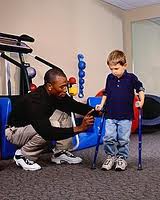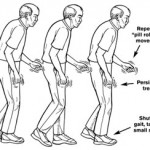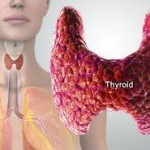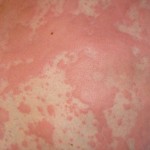
Muscular dystrophy (MD) is a group of inherited diseases in which the muscles that control movement (called voluntary muscles) progressively weaken. In some forms of this disease, the heart and other organs are also affected.
There are nine major forms of muscular dystrophy:
Myotonic
Duchenne
Becker
Limb-girdle
Facioscapulohumeral
Congenital
Oculopharyngeal
Distal
Emery-Dreifuss
Muscular dystrophy can appear in infancy up to middle age or later, and its form and severity are determined in part by the age at which it occurs. Some types of muscular dystrophy affect only males; some people with MD enjoy a normal life span with mild symptoms that progress very slowly; others experience swift and severe muscle weakness and wasting, dying in their late teens to early 20s.
The various types of MD affect more than 50,000 Americans.
The Major Forms of Muscular Dystrophy
Myotonic (also called MMD or Steinert’s disease). The most common form of muscular dystrophy in adults, myotonic muscular dystrophy affects both men and women, and it usually appears any time from early childhood to adulthood. In rare cases, it appears in newborns (congenital MMD). The name refers to a symptom, myotonia — prolonged spasm or stiffening of muscles after use. This symptom is usually worse in cold temperatures. The disease causes muscle weakness and also affects the central nervous system, heart, gastrointestinal tract, eyes, and hormone-producing glands. In most cases, daily living isn’t restricted for many years. Those with myotonic MD have a decreased life expectancy.
Duchenne. The most common form of muscular dystrophy in children, Duchenne muscular dystrophy affects only males. It appears between the ages of 2 and 6. The muscles decrease in size and grow weaker over time yet may appear larger. Disease progression varies, but many people with Duchenne (1 in 3,500 boys) need a wheelchair by the age of 12. In most cases, the arms, legs, and spine become progressively deformed, and there may be some cognitive impairment. Severe breathing and heart problems mark the later stages of the disease. Those with Duchenne MD usually die in their late teens or early 20s.
Becker. This form is similar to Duchenne muscular dystrophy, but the disease is much milder: symptoms appear later and progress more slowly. It usually appears between the ages of 2 and 16 but can appear as late as age 25. Like Duchenne muscular dystrophy, Becker muscular dystrophy affects only males (1 in 30,000) and causes heart problems. Disease severity varies. Those with Duchenne can usually walk into their 30s and live further into adulthood.
Limb-girdle. This appears in the teens to early adulthood and affects males and females. In its most common form, Limb-girdle muscular dystrophy causes progressive weakness that begins in the hips and moves to the shoulders, arms, and legs. Within 20 years, walking becomes difficult or impossible. Sufferers typically live to middle age to late adulthood.
Facioscapulohumeral. Facioscapulohumeral refers to the muscles that move the face, shoulder blade, and upper arm bone. This form of muscular dystrophy appears in the teens to early adulthood and affects males and females. It progresses slowly, with short periods of rapid muscle deterioration and weakness. Severity ranges from very mild to completely disabling. Walking, chewing, swallowing, and speaking problems can occur. About 50% of of those with facioscapulohumeral MD can walk throughout their lives, and most live a normal life span.











Leave a reply